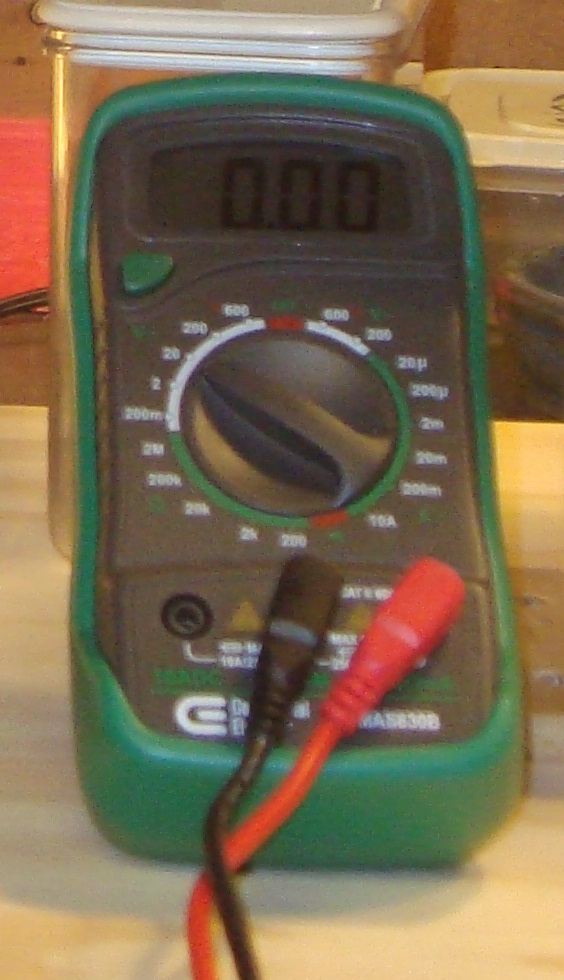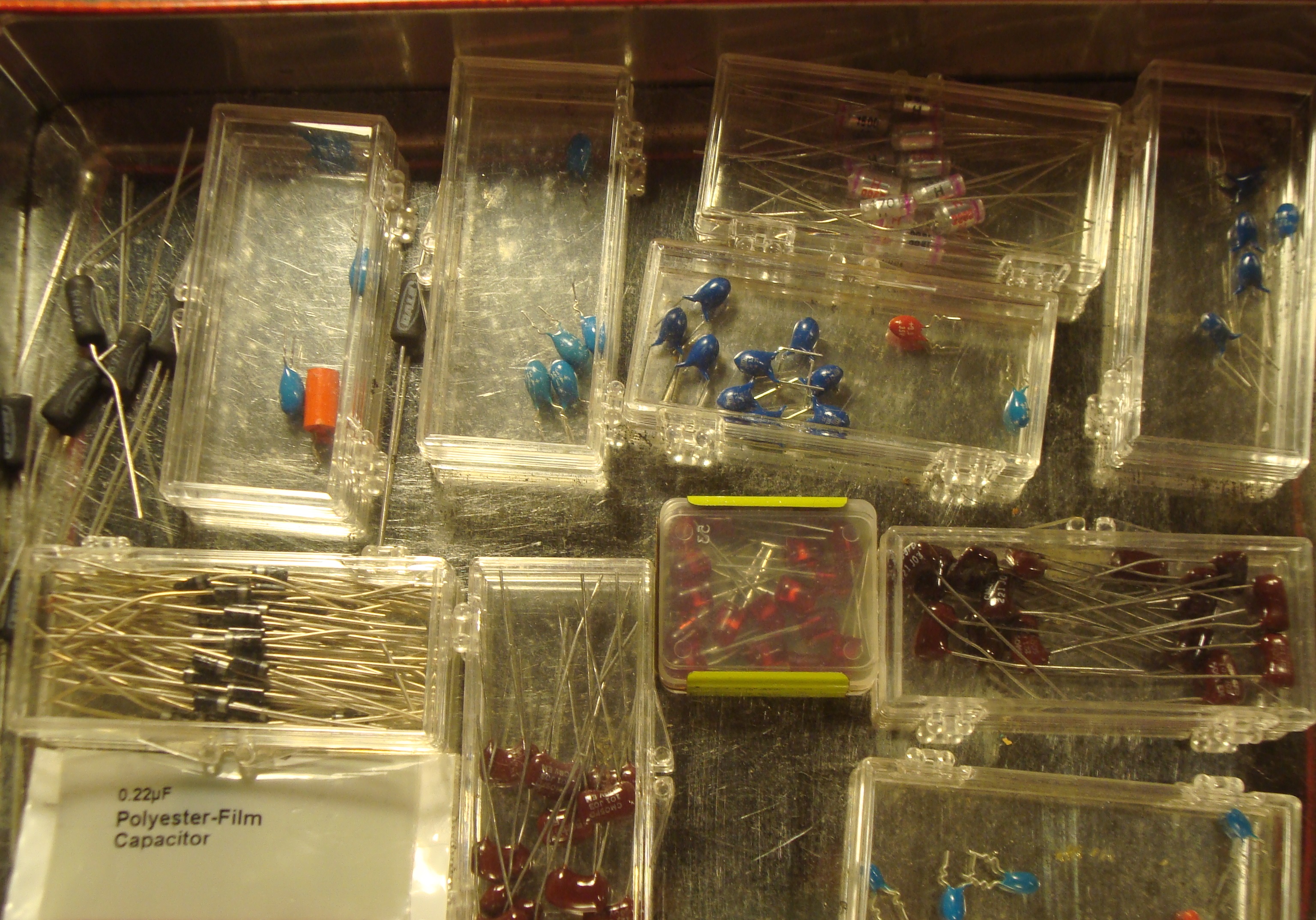As a beginner to hobby or do-it-yourself electronics, it may be difficult to know where to start to make simple electronics projects at home.

You will need simple project ideas, some electronics knowledge, a work space, electrical components, and tools to make simple electronics projects at home. The type of simple electronics that you would like to make will affect how much preparation you will need in these 5 categories.
This article provides a quick introduction to these 5 things, which you will need to start making simple electronics projects at home.
Simple Project Ideas
If you are a complete beginner and have not yet invested any effort into setting up a workspace and obtaining basic electronics knowledge, electrical components, and tools, I recommend that you start by thinking of what types of simple electronics projects you would like to make.
When I was a beginner to hobby electronics, I had several years of computer programming experience, so I started with simple Arduino projects. Arduino is a beginner friendly platform that enables you to write code to control electronics such as LEDs and motors. You can also use Arduino to make decisions based on inputs from sensors.
Your choice of the type of project will affect how much effort you will need to put into the other areas. Below are three types of projects that I would consider simple:
- Electronics Kit – an electronics kit is a prepared set of components, tools, and instructions that can take you through the process of building a predesigned electronics project. An electronics kit is one of the quickest ways to start making simple electronics projects at home. Most electronics kits come with all of the components you will need and instructions for one or more projects. Some kits even come with some or all of the tools you will need such as screwdrivers and wire cutters. Building circuits from electronics kits was one way that I started my journey into hobby electronics. With certain kits you will also have the option of building your own projects once you learn the concepts from building from the project ideas that come with the kit.
- Simple and temporary solderless circuit – If you do not want to build a project that is prepared in a kit, you may want to build a simple temporary project either out of your own imagination or that you find in a project ideas book or website. If you choose this option, you will have to source your own tools and parts and potentially design your own circuit. Using a solderless breadboard is a very convenient way to build a temporary solderless circuit.
- Simple and permanent soldered circuit – This option is the most difficult out of these three simple project types. With this option, you will need to learn soldering, which is the process of permanently attaching electrical components together using heat from a soldering iron and a material called solder. A common way to do this is to solder components onto a solderable breadboard, which comes with a generic grid layout of traces (connections).
Basic Electronics Knowledge
Depending on the type of project that you chose above, you will need to obtain a certain amount of basic electronics knowledge. If you choose to make a project from an electronics kit, you may not need to separately learn about electronics, since many electronics kits have instructions to walk you through how to build a predesigned circuit.
Some electronics kits will simply teach you how to assemble a circuit whereas other, more in depth kits will teach you electronics concepts such as Ohm’s law, which states that the voltage (V) across a section of an electrical circuit equals the current (I) flowing through that section of circuit multiplied by its resistance (R):
V = IR
You can also learn basic electronics concepts from online articles, videos, and text books. Here is a list of some simple electronics concepts to get you started:
- Basic passive components (resistor, capacitor, inductor) and their function
- Ohm’s law
- Series and parallel circuits
- Analog vs. Digital components and circuits
- Kirchhoff’s Voltage Law
- Kirchhoff’s Current Law
Workspace
To be able to work effectively, you will need a workspace. In this post, I will mention some basic elements that I would recommend for your workspace:
- Table that is large enough to fit your projects and commonly used tools and for which is acceptable if worn or scratched.
- Comfortable chair – You may want a chair that can swivel and roll so that you can easily access various tools or materials positioned around you.
- Adequate lighting that enables you to easily see small components on the table. An adjustable light that can swivel and extend to focus light on various points around the table is ideal.
- Set of tools that are necessary for the types of projects that you will be doing
- An organized set of components, parts, and materials for use in your projects (This could take the form of an electronics kit).

Tools
If you have an electronics kit that provides all of the necessary tools for its projects, you will not need to put in extra effort to obtain a set of tools. Also, in the simplest case, you may be able to insert a set of electrical components into a solderless breadboard to make a basic circuit without using any tools.

Otherwise, you will need to obtain a set of basic electronics tools. This is a minimal list of tools that I would recommend for simple electronics projects:
- Wire Stripper – provides ability to cut wire and easily remove insolation from the end of wire to expose the conductor
- Multimeter – used to make fundamental electronics measurements of voltage, current, and resistance
- Philips Head Screwdriver – used to tighten or loosen a Philips head (“+”) screw
- Flat Head Screwdriver – used to tighten or loosen a flat head (“-“) screw
- Soldering Iron and solder – used to assemble permanent circuits by connecting components together with heat an solder

Electrical Components, Parts, and Materials
In order to make simple electronics projects at home, you will need a collection of fundamental components, parts, and materials. If you are getting started with an electronics kit, the kit may include everything that you need. Otherwise, I would recommend the following categories of fundamental components for a very simple project:
- DC Power Supply – This could take the form of a battery pack or adjustable AC to DC lab supply for example.
- Solderless Breadboard – You can use a solderless breadboard for prototyping simple electronics circuits. This board enables you to create a temporary arrangement of electrical components on a board. You can easily insert and remove components in accordance to electrical connections on the board.
- Jumper Wires – These enable you to create additional connections between points on a solderless breadboard or between the breadboard and other components off of the board.
- Switches – These can be push buttons or or toggle switches.
- LEDs (Light Emitting Diodes) – provides light in various colors for your projects
- Resistors – limits the flow of current
- Capacitors – temporarily stores energy. Takes time to charge and discharge.

From there, you may want to increase the sophistication level of your project slightly. Below are several ways that you can do this:
- Add an introductory microcontroller such as an Arduino
- Add a sensor to your project – This will enable you to create a project that reacts to its environment in some way.
- Add a transistor – can be used to switch a high current devices such as a motor using low current and voltage
- Add a motor and mechanical parts
- Make your circuit permanent by soldering the components to a solderable breadboard
Another aspect to think about is whether you would like your project to involve pure electronics, or if you would like to incorporate electromechanical elements such as gears, motors, belts, and springs.
Since I was young, I have always been very intrigued by mechanical parts, so I usually like to incorporate these into my projects. However, this can quickly get more advanced than a quick and simple project.
Project Ideas Tip
Thinking of a project idea first and then using this idea to justify purchasing a set of parts is a common practice. However, I find great excitement from collecting parts and then using these parts to inspire a project! Sometimes, I will just explore my workspace, pulling out drawers and looking in containers, to take inspiration from my collection of parts for my next project!